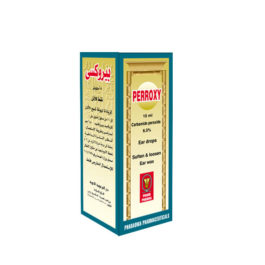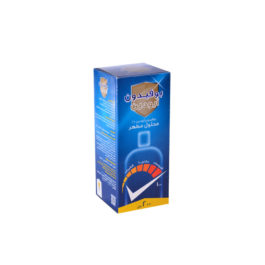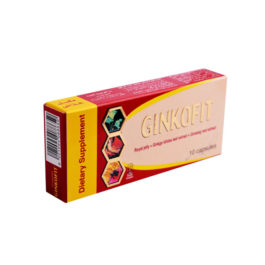Description
PROPERTIES:
Ranitidine is a competitive reversible inhibitor of histamine at H2-receptors including receptors on the gastric cells. Ranitidine does not lower serum calcium ions in hypercalcemic states. Ranitidine is not an anticholinergic agent. Ranitidine inhibits secretion of HCl by gastric parietal cells by about 95% of basal secretion. It also inhibits 99% of betazole induced secretion, 80% of pentagastrin induced secretion and 95% of food induced secretion. Ranitidine has no antiandrogenic effect, no effect on prolactin level and no effect on count, motility or morphology of sperm.
PHARMACOKINETIC:
Ranitidine absorption after oral administration is good, the bioavailability reaches 55%.
The elimination half-life is approximately 2.5 hours.
Ranitidine elimination is mainly by kidneys and 50% is excreted in the unchanged form.
Ranitidine crosses the placenta barrier and is secreted in milk.
In elderly, the plasma elimination half life is increased due to the decrease in glomerular filtration.
INDICATIONS:
Ranitidine 150 sachets:
– Treatment and prophylactic therapy of benign gastric and duodenal ulceration.
– Treatment of erosive and reflux esophagitis.
– Control of pathological hypersecretaory conditions such as Zolinger-Ellison syndrome.
– Acid aspiration during general anesthesia (mandelson’s syndrome).
– For eradication of Helicobacter pylori from peptic ulcer patients (as a component of triple therapy).
– Prophylaxis against stress ulcer.
– Prophylaxis against NSAIDs induced ulceration and dyspepsia.
– Relief of occasional heartburn, acid indigestion and sour stomach.
Ranitidine 75 sachets:
– For relief of heartburn associated with acid indigestion and sour stomach.
– For prevention of heartburn associated with acid indigestion and sour stomach brought out by certain foods and beverages.
DOSAGE:
Sachet is to be dissolved in half glass of water.
Ranitidine 150 sachets:
– Duodenal and gastric ulceration:
1 sachet twice daily or 2 sachets at bed-time once daily, for 4-8 weeks followed by maintenance therapy of 1 sachet at bed-time.
– Esophageal reflux:
1 sachet twice daily or 2 sachets at bed-time for 12 weeks.
– Erosive esophagitis:
1 sachet 4 times daily.
– Zolinger-Ellison syndrome:
1 sachet 3 times daily.
– Mandelson’s syndrome:
1 sachet 2 hours before induction of anesthesia and preferably 1 sachet the night before operation.
Ranitidine 75 sachets:
1 sachet when necessary.
CONTRAINDICATIONS:
Hypersensitivity to ranitidine or any of the excipients.
SIDE EFFECTS:
Rarely reported nausea, diarrhea, constipation and vertigo.
DRUG INTERACTIONS:
Salts, oxides and hydroxides of magnesium, aluminium and calcium may decrease the digestive absorption of ranitidine when administered at the same time, a time interval of more than 2 hours should be considered.
Ranitidine decreases the digestive absorption of itraconazole and ketoconazole antifungals as the gastric pH increases.
PREGNANCY & LACTATION:
Ranitidine is used in pregnancy only if necessary.
Not to be used during lactation.
PRECAUTIONS & WARNINGS:
Symptomatic response to therapy does not preclude presence of gastric malignancy.
Dose should be adjusted in case of renal failure, hepatic insufficiency or elderly.
Administration of H2-receptors inhibitors favorise the development of intragastric bacteria as gastric acidity decrease.
PACKING:
RANITIDINE 150 sachets: A carton box containing 10 sachets.
RANITIDINE 75 sachets: A carton box containing 6 sachets.
STORAGE:
Keep at a temperature not exceeding 30C, in dry place.
Keep out of reach of children.
INSTRUCTION TO PATIENTS:
As ranitidine absorption is not altered by food, the treatment may be taken with meals or separated.







Reviews
There are no reviews yet.